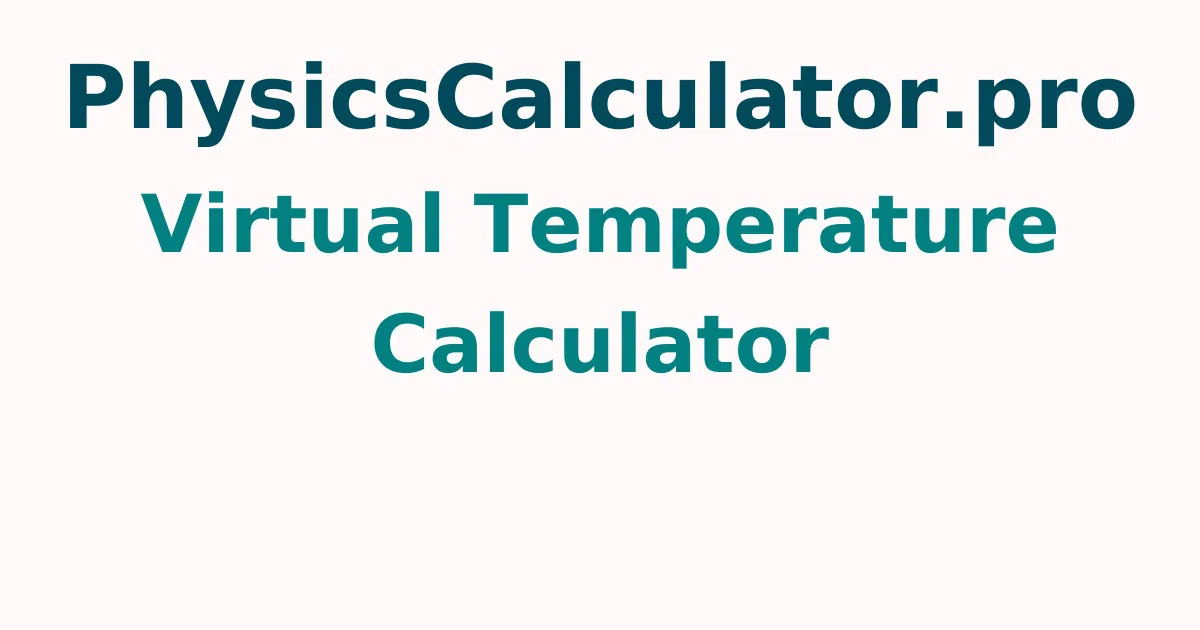Virtual Temperature Calculator
Our virtual temperature calculator is intended to assist you in determining one of the many important factors in atmospheric thermodynamics used in computer games.
Virtual Temperature Calculator: In this calculator, you will discover how to utilize the virtual temperature formula as well as the definition of virtual temperature and how it relates to the density of moist air in this article. We'll also cover its applications, including tropical cyclones, as the cherry on top.
What is Virtual Temperature
The imaginary temperature is a very real phenomenon. Although you can't measure it with a thermometer, it's quite simple to calculate using the right formula (even easier with the virtual temperature calculator). So, what is it, exactly? The virtual temperature is the temperature at which a dry air parcel would need to be to have the same density as moist air if its volume and pressure were equal.
Because molecules of various elements have different masses, changes in composition impact the density of the air parcel. Humid air has a lower molecular weight than dry air.
Why is the Virtual Temperature always Higher than the Actual Temperature?
When compared to dry air, moist air has a lower density. We can warm up the dry air to make it less dense because we don't want to change its composition to equalize these numbers. As a result, the virtual temperature exceeds the actual temperature.
Here are some numbers to prove that this isn't just imagination. Nitrogen (78%) and oxygen (21%), with molecular weights of 28 g/mol and 32 g/mol, respectively, make up the majority of dry air. Water with a molecular weight of only 18 g/mol replaces some of these molecules when moisture is added. As a result, humid air has a lower molecular weight. The virtual temperature equation is used to find the value of this temperature.
FAQs on Virtual Temperature Calculator
1. Is the virtual temperature higher than the temperature?
The water vapour has a lower density than dry air and warm air has a lower density than cool air, the virtual temperature is always higher or equal to the actual temperature.
2. What is the relation between saturation and dew point?
At current temperatures and pressures, air that is saturated holds the maximum amount of water vapour possible. Dew point and air temperature are equal when air temperature and dew point temperature are equal. There is no difference between the ambient temperature and the dew point temperature.
3. What is the difference in temperature equivalents?
The temperature of air in a parcel from which all the water vapour has been removed by an adiabatic procedure is known as equivalent temperature in atmospheric science.
4. Is the potential temperature greater than the current temperature?
An adiabatically restored air parcel's potential temperature equals the temperature of that air parcel at a reference surface pressure under adiabatic motions.
